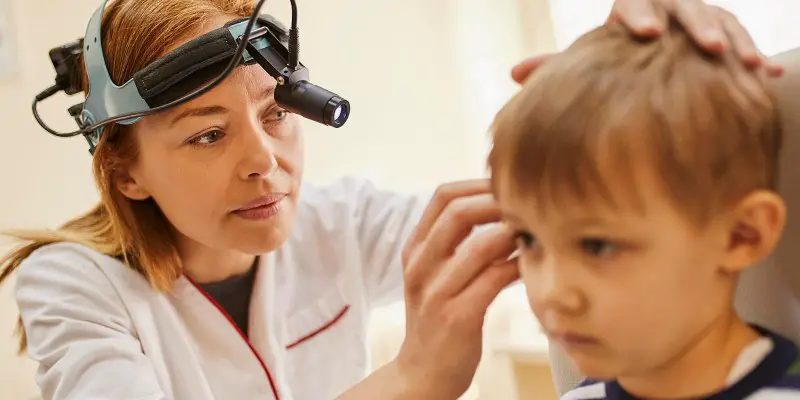Introduction
Hearing is a critical component of a child’s development, serving as the gateway to language acquisition, communication skills, and socio-emotional growth. Sensorineural hearing loss (SNHL), the most common type of permanent hearing loss, has significant implications on a child’s developmental trajectory. This critical examination aims to delve into the complexities of pediatric SNHL, analyzing its impact on child development, the importance of early detection and intervention, and the challenges and success stories that punctuate this narrative.
Understanding SNHL in children is not a straightforward task. It’s a complex interplay of genetics, environmental factors, medical interventions, educational systems, and the child’s resilience. It’s a journey fraught with challenges but also replete with triumphs and inspiring stories of children overcoming odds. This analytical exploration will critically appraise each aspect of pediatric SNHL, adding depth to our understanding and fostering a more comprehensive perspective.
In the course of this exploration, it is crucial to bear in mind that while this examination might lean on the side of critique, it does not dismiss the extraordinary progress made in this field. Rather, the intent is to identify areas of improvement, stimulate dialogue, and contribute to advancing strategies and solutions in the realm of pediatric SNHL.
OTC Hearing Aid Pair
Experience the world like never before with the RCA OTC Behind-the-Ear Hearing Aid. Our advanced digital technology ensures that every sound is crystal clear and vibrant, allowing you to fully immerse yourself in life’s experiences. Whether it’s the laughter of loved ones or the music that moves you, our hearing aid brings back the joy of every moment.
Say goodbye to the hassle of appointments and prescriptions. The RCA OTC Hearing Aid is designed to meet the needs of individuals without the need for a prescription. With its seamless setup and user-friendly design, you can effortlessly enhance your hearing abilities and stay connected to the world around you. Simply unpack, wear, and enjoy improved auditory perception instantly.
Experience optimal comfort and style with our discreet behind-the-ear design. The thin tube design allows you to wear glasses comfortably, so you can enjoy clear hearing while maintaining your personal sense of style. Plus, our rechargeable battery ensures long-lasting power, eliminating the inconvenience of constantly replacing small batteries. Elevate your hearing experience with the RCA OTC Hearing Aid and embrace the world with confidence.
The Impact of Sensorineural Hearing Loss on Child Development
The early years of a child’s life are a crucial period of rapid development and learning. With sensorineural hearing loss, children face impediments in essential developmental domains. This disruption primarily manifests in delayed language acquisition and speech development due to reduced access to auditory linguistic input. This delay can further impact cognitive abilities, literacy skills, and academic performance.
Moreover, it can also affect the socio-emotional development of the child. Children with SNHL may experience feelings of isolation and difficulty socializing with peers due to communication barriers. These issues highlight the profound and far-reaching impact of SNHL on child development, underscoring the need for early identification and comprehensive interventions.
Early Detection and Intervention in Pediatric Sensorineural Hearing Loss
Early detection of sensorineural hearing loss is pivotal in mitigating its impact on child development. Through newborn hearing screening programs, many cases of SNHL can be detected within the first few days or weeks of a child’s life. Prompt detection facilitates early intervention, which can significantly improve the child’s language, cognitive, and socio-emotional outcomes.
However, despite the importance of early detection, not all children have access to newborn hearing screening programs, particularly in low-resource settings. Furthermore, even when SNHL is detected early, there can be delays in initiating appropriate interventions due to systemic issues and resource constraints. These gaps in detection and intervention services represent critical areas for improvement in the fight against pediatric SNHL.
Turn Up the Volume on Hearing Loss Awareness
Understanding Congenital Sensorineural Hearing Loss
Congenital sensorineural hearing loss, present at birth, can be caused by genetic factors or prenatal exposures to infections or certain medications. The intricate nature of these causes calls for a deeper understanding and further research. Despite advancements in genetic testing, the cause of congenital SNHL remains unknown in a significant number of cases.
A comprehensive understanding of the etiology of congenital SNHL can guide prevention strategies, inform prognosis, and aid in the development of targeted interventions. However, the journey towards this understanding is fraught with scientific and ethical challenges, particularly in the realm of genetic testing and gene therapy.
Pediatric Sensorineural Hearing Loss: Challenges and Solutions in School
School-age children with sensorineural hearing loss face unique challenges in educational settings. These challenges range from difficulties in auditory learning, communication with peers, to a lack of understanding and accommodation on the part of the educational institutions. It’s critical to consider that these issues can further exacerbate the academic and social disparities experienced by children with SNHL.
Implementing solutions in school settings involves multi-faceted strategies, from the use of assistive listening devices and classroom accommodations to specialized educational programs and services. Teacher training and fostering a supportive and inclusive learning environment are equally important. Despite the existence of these solutions, their implementation is inconsistent, with considerable variation across schools and regions.
CBD for Tinnitus: Can It Stop the Ringing?
Success Stories: Children Overcoming Sensorineural Hearing Loss
Despite the challenges associated with sensorineural hearing loss, countless children demonstrate remarkable resilience and tenacity. Stories abound of children with SNHL who, with the support of early interventions, assistive technology, and educational accommodations, excel acadically, thrive socially, and achieve remarkable success. Such stories illuminate the possibilities that exist when barriers are removed and the right support is in place.
These success stories, while inspiring, should not be viewed as anomalies but as attainable outcomes. They underscore the importance of comprehensive support systems and the transformative power of resilience, further cementing the argument for widespread, equitable access to interventions and resources for children with SNHL.
Conclusion
Analyzing pediatric sensorineural hearing loss from an academic lens facilitates a deeper understanding of the complex interplay between the condition, the child, and the environment. The exploration above clearly articulates the pervasive impact of SNHL on a child’s development and the importance of early detection and intervention. It also highlights the systemic and logistical challenges in implementing school-based solutions and the resilient spirit of children navigating these challenges.
However, there are notable gaps, particularly concerning the understanding and management of congenital sensorineural hearing loss. While advancements in genetics provide some insight, the etiological mystery of a significant number of cases persists. This mystery, coupled with the ethical quandaries surrounding genetic interventions, provides ample fodder for future research and policy debates.
It’s also important to acknowledge the significant variation in the experiences and outcomes of children with SNHL, a reminder of the role of individual resilience and systemic support. The inspiring stories of children overcoming sensorineural hearing loss should serve as powerful motivators for expanding access to early interventions, assistive technology, and supportive educational environments.
In conclusion, pediatric sensorineural hearing loss remains a complex, multi-dimensional challenge that requires a holistic, collaborative approach to address effectively. From researchers and medical professionals to educators and policymakers, each stakeholder has a critical role to play in shaping the narrative of pediatric SNHL. As this exploration makes evident, there is an imperative to enhance our understanding, improve interventions, and foster environments that empower children with SNHL to reach their full potential.
Finally, it’s worth noting that while the analytical lens employed here has drawn attention to gaps and areas of improvement, it also recognizes the substantial progress made to date. There is reason for optimism, but it’s a cautious optimism tempered by the knowledge of the work that lies ahead.






